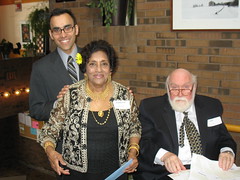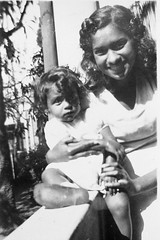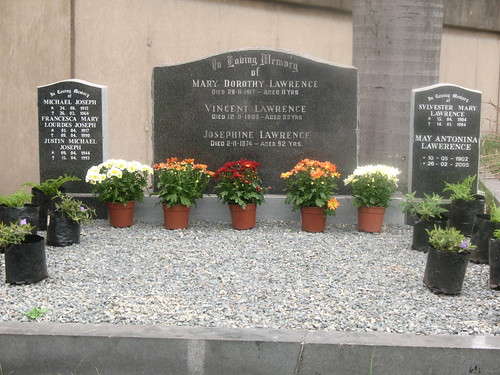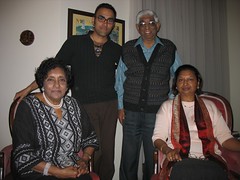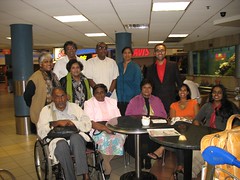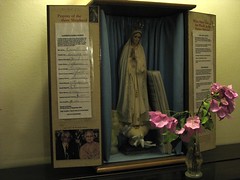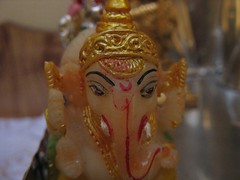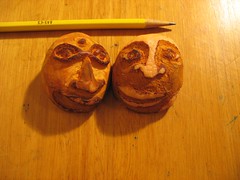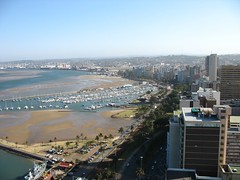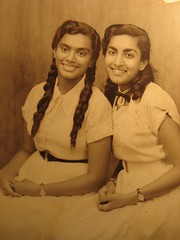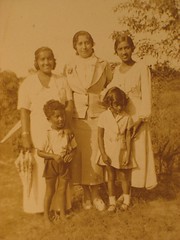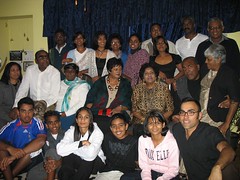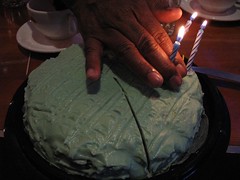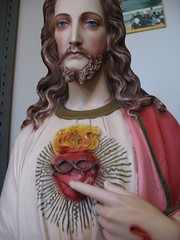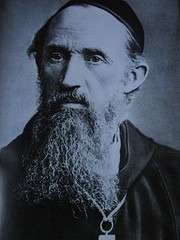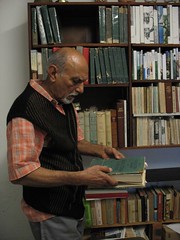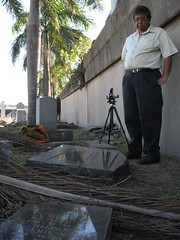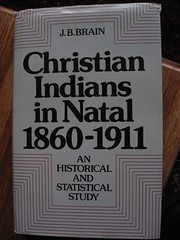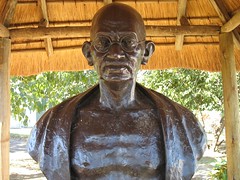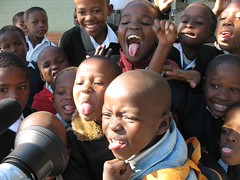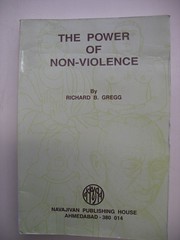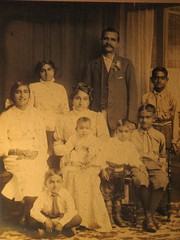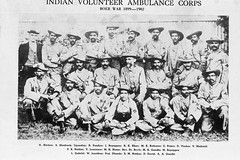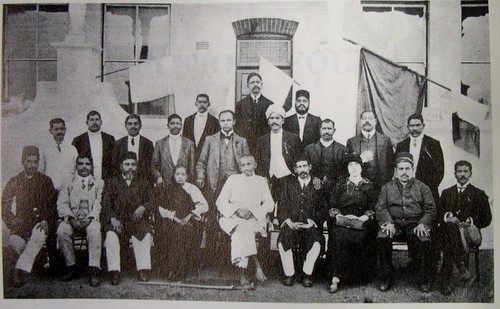Having spent 3 weeks here in South Africa, it is clear to me that one of South Africa's biggest problems is violent crime. The most pernicious form of which involves shocking acts of cruelty reminiscent of Stanley Kubrick's film
"A Clockwork Orange." There was an example in the paper of a white man who was stripped naked by thugs who then
crazy-glued his exercise bike and made him sit on the bike, and then proceeded to crazy glue this mouth shut and rob him. Attacks like these induce fear and revulsion in the population, and lead to a sense of hopelessness and despair.
How are people responding to South Africa's crime problem? My observation is that there has been an explosion of security firms. This has led to the employment of many people, including many Africans, and at best, has created tiny islands of safety, e.g., the Gateway Mall outside of Durban is a place where people of all races can come together in security. Similarly, people with money have walls around their houses, which are then protected by locks and "armed response" teams. The end result is that people of means are relatively safe in their homes, and criminals now rob them in their drive ways, or car jack them, or somehow catch them in transit. It must be remembered that many poor South African's are also victims of violent crime, and indeed, South Africa is purported to have the
highest incidence of reported rape in the world.
I have been reading
Richard Gregg's "The Power of Non-Violence," which has helped me to better understand the principles of
Satyagraha. And, I've also become very interested in Marshall Rosenberg's
Non-Violent Communication. Both approaches maintain that you cannot solve any problem at the level of the problem. A violent response to thugs only serves to reinforce the idea that problems can be solved through violence. In a sense, you are agreeing with the criminals, that might really does make right. The increased security approach is already showing its limitations, and it is clear that it will never solve the security problem in South Africa, or it might do so by returning South Africa to a police state.
There is now an opportunity to explore alternative approaches to reducing violent crime in South Africa. One such approach would involve a Satyagraha campaign aimed at discrediting the use of violence to achieve economic means, and instead, supporting individuals in finding non-violent ways to meet their own needs for economic and personal security, as well as their needs for meaning, and self-respect.
This is a tall order, but it is no more difficult than other non-violent struggles that have been attempted, either here in South Africa against the white racist government, or elsewhere (e.g., against the British in India, against the Nazis in the Netherlands, against racist whites in the Southern United States). The only difference is that the people whose minds we are trying to change are not part of any government and they are not in charge, although many are part of organized crime syndicates operating within the country.
Before we can begin to articulate a plan for a Satyagraha campaign against violent crime, it is important to understand the psychology of our opponent. An important tool in disarming our opponents is empathy. I would argue that the men who stripped that man of his clothes and crazy glued him to his bicycle seat, have, themselves, suffered from feelings of being emasculated and rendered helpless and voiceless. From this perspective, their violent act can be seen as a tragic attempt to seek empathy, in this case, by victimizing someone else. As such, an important part of our strategy must be to give our opponent empathy, in an attempt to help them remember their humanity (by treating them like human beings instead of enemies), and help them recover their sanity.
Another aspect we must address is youth thug (or
Tsotsi) culture. As in the United States, violent gang culture has been celebrated, and becomes for its participants an identity. Gang members form an identity for themselves that is based on being bad and violent and tough. When newspapers criticize the acts of "violet criminals," this only serves to reinforce their identity as bad people. This is just another form of ego inflation, but in this case organized around being the baddest and the toughest, and the most unfeeling. It is important to remember that this identity is only a persona, and not who the person really is. Change will hinge on helping people disidentify with this identity as a gangster, and helping them instead realize their own capacity for feelings of vulnerability and love.
It also goes without saying that the vast majority of criminals who are commiting these crimes are young black men. In this way, this Satyagraha would be different than previous campaigns, because the people whose minds we are trying to change have been traditionally disempowered and disadvantaged. As such, this campagin may require different tools of passive resistance and active non-violent communication.
Progress will depend in part on getting past enemy imagery, and seeing the humanity of our opponent, but what then? The next step involves identifying opportunities for contact with violent criminals, and then creating situations where the power of non-violence can be used to maximum advantage. Let me explore some possible leverage points:
1) Prisoners. South Africa has many violent criminals in prison. Instead of judging these people, and reinforcing their identity as the "worst of the worst," which just plays into their egos, and reinforces a culture of violence and retributive justice, we could instead adopt methods pioneered by
Kiran Bedi, who reformed the infamous Tihar jail in India. I would propose an active campaign that provided empathy for prisoners,
vipassana meditation, education and vocational training, as well as training as Satyagrahis. Even a handful of Satyagrahis taken from the ranks of South African jails could have a massive impact on this struggle. No one understands the motivations of gangsters better than the gangsters themselves. These gangsters cum Satyagrahis would then be in the best position to provide for a coordinated Satyagraha campaign to target communities.
2) Transforming Victim Consciousness. Part of the campaign should also focus on developing Satyagraha among the ordinary population. Gandhi maintained that Satyagraha requires courage, and a willingness to suffer, and a desire to change the mind and heart of the attacker without inflicting suffering on them.
How can we confront violent criminals in a non-violent way that communicates self-respect and respect for the attacker, without taking foolish risks? The answer will require more research, and I think it will involve Non-Violent Communication, and a delicate balance between asserting one's right to personal and economic safety
and a willingness to let go of one's personal possessions. This idea could be extended even further: a willingness on the part of wealthy South Africans to embrace
voluntary simplicity and live with less, and instead invest in strategies for making sure that everyone's needs get met, including the need for economic and personal security for all.
3) Youth. There are already many programs aimed at "at-risk" youth in South Africa. These programs could be strengthened, and students could be taught Non-Violent Communication skills, as well as educational and vocational skills. Personally, I am very interested in initiatives aimed at increasing internet access to disadvantaged areas.
4) Children. I am particularly interested in training youth to in turn train children in Non-Violent Communication. This, along with access to education and opportunity, can help South Africans create a peaceful and prosperous nation.
5) Positive Visions of the Future. Finally, I think it is important to put our energy into developing positive visions of the future we want to manifest, instead of energizing our fears. With so much mineral and agricultural wealth, and with a solid infrastructure and roads, and with only 44 million people, it should be possible to create a safe and prosperous South Africa. This would be a country that ensured economic and personal security for all its citizens, as well as ample room for personal autonomy and expression, including linguistic and cultural diversity. South Africa is a microcosm of the same problems that are facing the rest of the world, and as such, there are many allies all over the world seeking to solve these challenges through non-violent means.
 Mum and I visit South Africa in 2007 and 2012 to learn about the life and times of my great grandfather, Vincent Lawrence (1872-1965). Lawrence worked with Gandhi when the Mahatma was in South Africa, got involved in the struggle against apartheid, and helped found St. Anthony's Church in Durban.
Mum and I visit South Africa in 2007 and 2012 to learn about the life and times of my great grandfather, Vincent Lawrence (1872-1965). Lawrence worked with Gandhi when the Mahatma was in South Africa, got involved in the struggle against apartheid, and helped found St. Anthony's Church in Durban.









